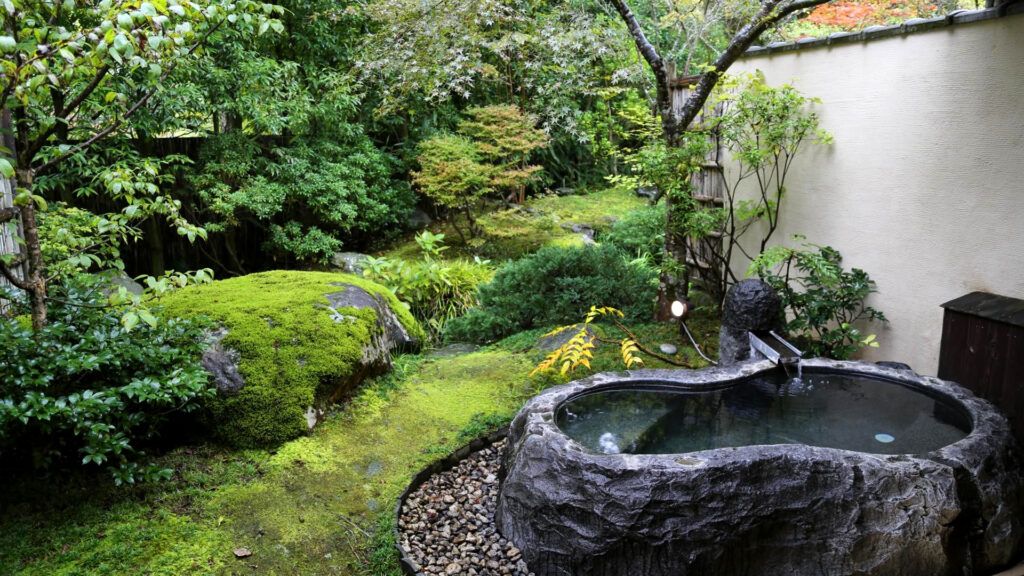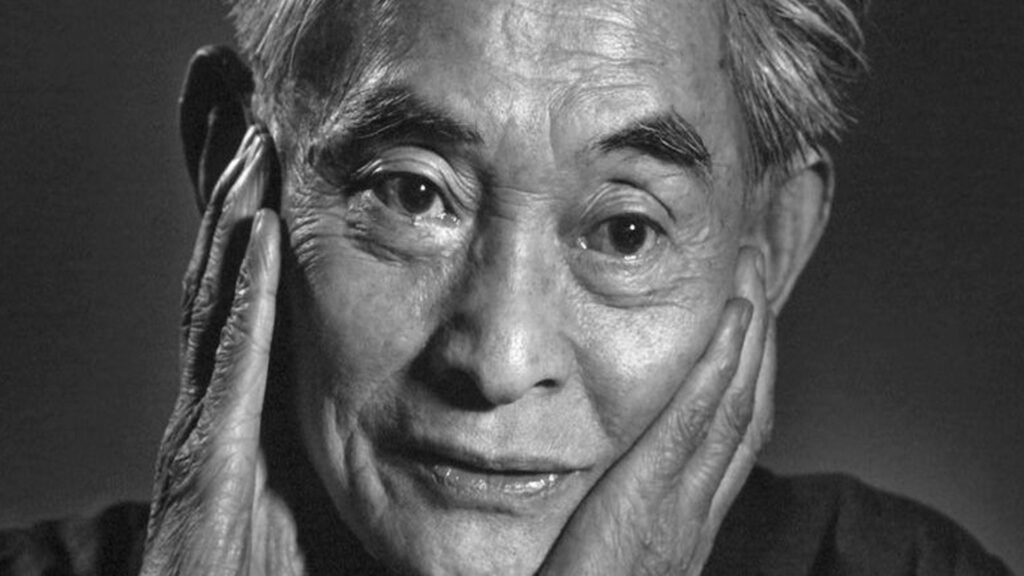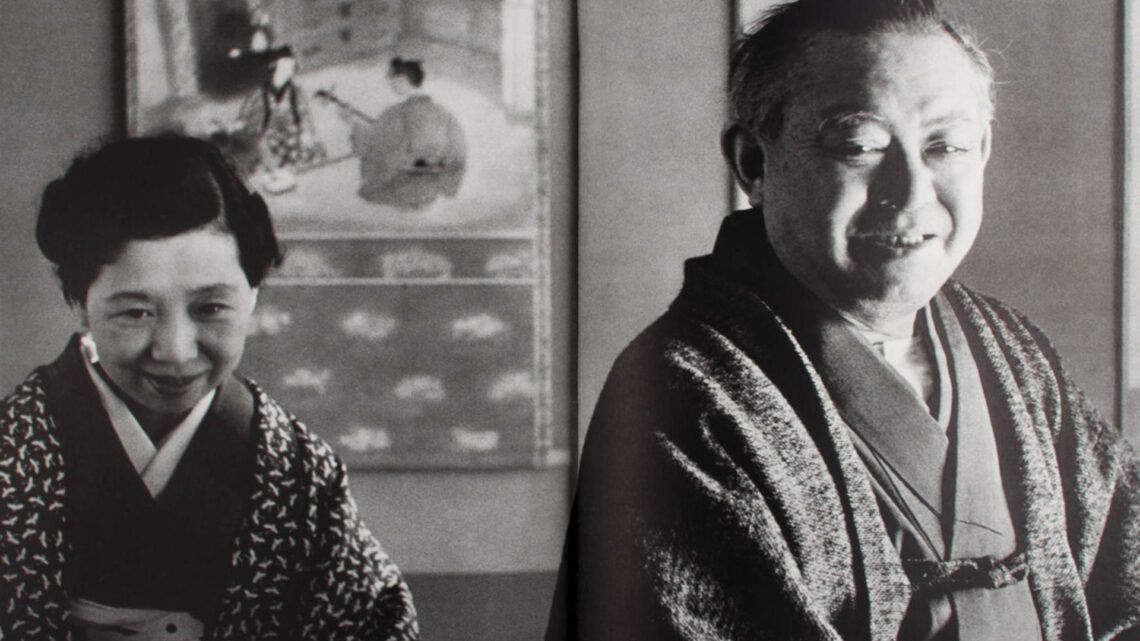
In Japanese literature, the principle of Wabi-Sabi plays a significant role. This concept, extending far beyond literature, is deeply rooted in Japanese culture and shapes the understanding of aesthetics, philosophy, and way of life. To fully grasp the principle of Wabi-Sabi in Japanese literature, it is important to examine its origins, significance, and its effects on various literary works.
The term “Wabi-Sabi” originates from Japanese and is a combination of two different aesthetic concepts: “Wabi” and “Sabi.” “Wabi” refers to the beauty of simplicity and humility. It represents imperfection, which is viewed as beautiful and admirable. On the other hand, “Sabi” denotes the beauty that comes with the passage of time. It encompasses the idea of impermanence, decay, and patina bestowed upon an object through age and use.
The principle of Wabi-Sabi finds its origins in the teachings of Zen Buddhism, which are heavily inspired by nature. Zen monks consider nature as a source of enlightenment and strive to integrate its beauty and harmony into their way of life. From this perspective, they also view human creations, whether art or literature, as part of nature and aim to reflect their natural simplicity and impermanence.
In Japanese literature, the principle of Wabi-Sabi manifests in diverse ways. On one hand, there are works celebrating the beauty of simplicity and humility. These works often feature clear, pared-down language aiming to express the essential and avoid unnecessary ornamentation. On the other hand, there are literary works addressing themes of impermanence and decay, finding beauty in transience. These works may be melancholic but simultaneously express a deep appreciation for the fleetingness of life and the beauty of the moment.
An outstanding example of the principle of Wabi-Sabi in Japanese literature is Haiku poetry. Haiku is a traditional Japanese poetic form consisting of three lines totaling 17 syllables. These poems often capture the beauty of nature or simple everyday scenes and are renowned for their clarity, simplicity, and depth. Haiku poets seek to capture the essence of a moment while reflecting both the beauty and the transience of life.
Another example of the principle of Wabi-Sabi in Japanese literature is the works of writer Yasunari Kawabata. Kawabata, who received the Nobel Prize in Literature in 1968, is known for his subtle and nuanced portrayal of human emotions and the use of imagery emphasizing the transience of life. His novels and short stories are often suffused with a quiet melancholy that poignantly expresses the principle of Wabi-Sabi.
In contemporary Japanese literature, the principle of Wabi-Sabi is also present, albeit often in modern forms and styles. Authors like Haruki Murakami have embraced the legacy of Wabi-Sabi and integrated it into their works by exploring themes of loneliness, loss, and the search for meaning. Murakami’s novels are characterized by a surreal atmosphere often imbued with a sense of ambiguity and transcendence, interpreting the principle of Wabi-Sabi in new and innovative ways.
Overall, the principle of Wabi-Sabi is a fascinating concept deeply rooted in Japanese literature and serves as a rich source of inspiration for writers and readers worldwide. It reminds us to appreciate the beauty in the simple, acknowledge the impermanence of life, and seek harmony with nature. Through its complexity and depth, the principle of Wabi-Sabi provides a rich and multifaceted foundation for exploring the human experience and the quest for meaning and beauty in the world around us.
The History of Wabi-Sabi in Japanese Literature

The principle of Wabi-Sabi is a central concept in the history of Japanese literature, with far-reaching implications for the aesthetics, style, and values of this literary tradition. To understand the principle of Wabi-Sabi in Japanese literature, it is important to first gain insight into the cultural and philosophical backgrounds that contributed to its emergence and development.
In Japanese literature, the principle of Wabi-Sabi manifests in diverse ways, both in themes and representation. Elements of Wabi-Sabi can be found in the earliest literary works, such as the classical poems of Manyoshu and Kokinshu. These poems reflect the naturalness and simplicity of daily life while emphasizing the impermanence and transience of nature.
An outstanding example of the embodiment of Wabi-Sabi in Japanese literature is Haiku poetry, a traditional form of short poems that often captures images and experiences of nature. Haiku poets like Matsuo Basho and Yosa Buson mastered the art of discovering subtle moments of beauty and enlightenment in the apparent banality of everyday life. Through their works, readers gained a deep appreciation for the simplicity and imperfection of the world around them.
In addition to poetry, the principle of Wabi-Sabi also played a significant role in the development of other literary forms, such as the novel and theater. In classical Japanese novels like “The Pillow Book” by Sei Shonagon and “The Tale of Genji” by Murasaki Shikibu, subtle depictions of Wabi-Sabi can be found in the description of characters, landscapes, and human relationships. These works celebrate the beauty of the fleeting and imperfect, inviting readers to see the world with new eyes.
In Japanese theater, particularly in Noh theater, the principle of Wabi-Sabi is palpable. The minimalist stage sets, symbolic costumes, and serene, meditative atmosphere of Noh theater reflect the values of modesty and simplicity associated with Wabi-Sabi. Through the performance of these traditional pieces, audiences are invited to discover the beauty in the ordinary and hidden.
In modern Japanese literature, the principle of Wabi-Sabi has also found its place, albeit often in a more subtle form. Authors like Yasunari Kawabata and Yukio Mishima continued the legacy of Wabi-Sabi in their works by exploring themes of impermanence, loneliness, and the beauty of the everyday. Their novels and short stories invite readers to recognize the poetry of life in all its facets, from the fleeting cherry blossom to the yellowed page of an old diary.
Overall, the principle of Wabi-Sabi has exerted a profound influence on Japanese literature by promoting an aesthetic of simplicity, modesty, and impermanence. By emphasizing the beauty of the imperfect and irregular, Wabi-Sabi has changed the way Japanese authors perceive and represent the world around them. Even today, the principle of Wabi-Sabi remains an inspiring source of creativity and reflection for writers and readers worldwide.
A list of exemplary works and authors:

“Oku no Hosomichi” (The Narrow Road to the Interior) by Matsuo Basho
This work is a collection of travel haikus that poetically capture the beauty of nature and the simplicity of life. Basho’s travels and his encounters with various landscapes and people reflect the principle of Wabi-Sabi by highlighting the impermanence and beauty of the moment.
“The Pillow Book” by Sei Shonagon
As one of the most significant works of Japanese literature, “The Pillow Book” describes life at the court in the 11th century. Shonagon’s keen observations and her ability to recognize beauty in the mundane make this work a representative example of Wabi-Sabi.
“Cherry Blossoms and Red Beans” by Kawamoto Kihara:
This novel tells the story of an unusual friendship between an old pastry chef and a young woman. The delicate observations of nature and the emphasis on the transience of life make this work an outstanding example of the principle of Wabi-Sabi.
“Kafka on the Shore” by Haruki Murakami
This contemporary Japanese novel explores the boundaries between reality and fantasy. Through the use of surreal elements and the emphasis on the impermanence of being, the book reflects the central concepts of Wabi-Sabi and invites the reader to see the world with new eyes.
“Snow Country” by Yasunari Kawabata
This novel by Nobel laureate Yasunari Kawabata explores the melancholy and transience of life. Through the subtle depiction of landscapes and human relationships, the work reflects the aesthetic principles of Wabi-Sabi and invites the reader to recognize the beauty in impermanence.
These works illustrate the principles of Wabi-Sabi in Japanese literature in various ways, offering readers insight into the beauty of imperfection and impermanence. They are representative of the principle of Wabi-Sabi in Japanese literature, capturing the beauty of imperfection and impermanence in different ways and inviting readers to view the world with a new perspective.
The Influence of Wabi-Sabi on Japanese Literature

Wabi-Sabi has exerted a significant influence on Japanese literature. In literature, the spirit of Wabi-Sabi manifests in the depiction of natural simplicity, the appreciation of the ephemeral, and the emphasis on the transience of life. To fully understand the influence of Wabi-Sabi on Japanese literature, we must examine the origins of this philosophy as well as its development within the context of Japan’s literary history.
The roots of Wabi-Sabi can be traced back to ancient Japan, particularly to Buddhist and Zen Buddhist traditions. Zen Buddhism taught the practice of mindfulness and the appreciation of the moment, as well as insight into the impermanence of all things. These teachings influenced artistic expressions, including literature. The earliest works of Japanese literature, such as the poems of Manyoshu, demonstrate a deep connection with nature and an appreciation for its simplicity and imperfection.
Throughout Japan’s history, Wabi-Sabi evolved into a distinct aesthetic philosophy that was present not only in art but also in literature. The Heian era, known for its rich literary output, witnessed the golden age of courtly romance, particularly with masterpieces like “The Tale of Genji” by Murasaki Shikibu. Although this novel is famous for its lavish portrayal of courtly life, it also contains subtle references to Wabi-Sabi aesthetics, especially in the descriptions of nature and the impermanence of human emotions.
The medieval period brought a shift in literature as the focus turned more towards the daily lives of ordinary people. The tales of “Tales of the Heike” are an example of this development. These stories, describing the rise and fall of the Heike clan during the Genpei War, are characterized by an atmosphere of melancholy and a profound sensitivity to the transience of fame and power. By depicting heroes who, despite their bravery, ultimately succumb to the passage of time, these tales reflect the Wabi-Sabi philosophy in its most poignant form.
The Edo period saw a flourishing of fiction, with popular literature adopting new forms including haiku and the novel in the Ukiyo-e tradition. Haiku poetry, famous for its brevity and simplicity, embodies the essence of Wabi-Sabi by its ability to convey deep impressions of nature and human life in few words. Masters like Matsuo Basho used this form to capture the fleetingness of the moment and to appreciate the beauty of the ordinary.
In modern Japanese literature, the influence of Wabi-Sabi remains palpable, although themes and styles have evolved over time. Authors like Yasunari Kawabata and Yukio Mishima continue to reflect a deep connection with nature and an emphasis on the transience of life in their works. Kawabata’s “Snow Country” and Mishima’s “The Temple of the Golden Pavilion” are examples of novels that bring the Wabi-Sabi aesthetic into contemporary literary form by exploring the beauty and significance of the ephemeral and imperfect.
In today’s globalized world, Wabi-Sabi remains a fascinating concept that influences not only Japanese literature but also art and culture worldwide. Its message of humility, simplicity, and impermanence continues to resonate with people around the world, inspiring artists and writers to recognize and celebrate beauty amidst imperfection. In Japanese literature, the spirit of Wabi-Sabi is kept alive as authors continue to capture the subtle beauty of the everyday and reflect on the transience of life.
My Conclusion:

In Japanese literature, the influence of Wabi-Sabi has created a rich tradition that spans centuries and continues to shape the works of authors and poets. From the earliest poems of Manyoshu to contemporary novels, Japanese literature reflects the values of humility, simplicity, and impermanence that lie at the heart of the Wabi-Sabi philosophy.
The conclusion is clear: Wabi-Sabi is not just an aesthetic preference but a deeply rooted way of life that has shaped and enriched Japanese literature. By emphasizing the beauty of imperfection and appreciating the ephemeral, Wabi-Sabi teaches us to see the world through different eyes and discover beauty in the everyday.
Japanese literature, fueled by the aesthetics of Wabi-Sabi, encourages us to enjoy life in its simplicity and accept impermanence as an integral part of the human experience. In a world often characterized by perfectionism and excess, the philosophy of Wabi-Sabi reminds us that true beauty is often found in the small, unexpected moments.



